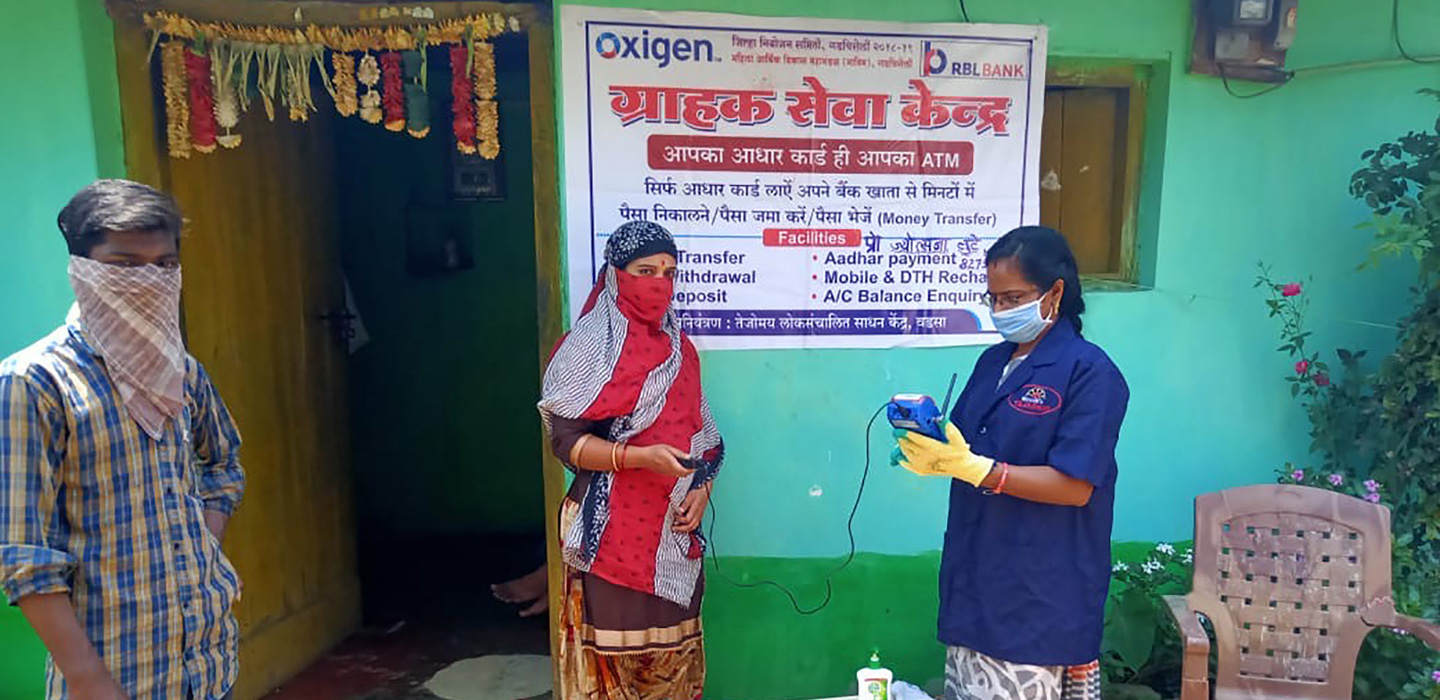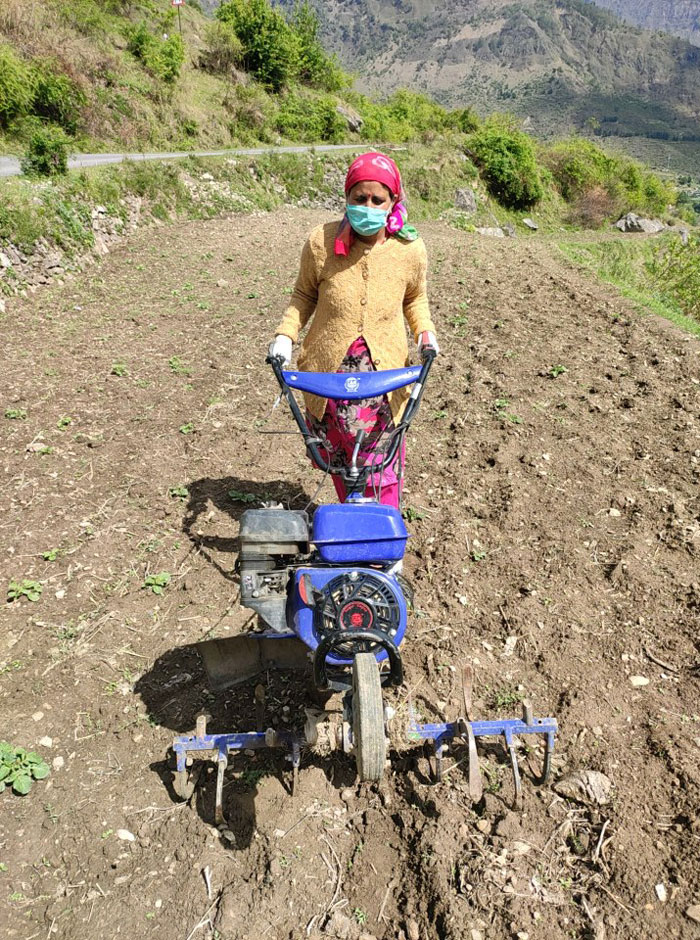Collaborating in a time of crisis: Three early takeaways from the COVID-19 response in India
IFAD Asset Request Portlet
Asset Publisher
Collaborating in a time of crisis: Three early takeaways from the COVID-19 response in India
By Meera Mishra

Women in Maharashtra using the micro-ATM system
India is home to 1.3 billion people. It is one of the world’s fastest-growing economies, and also one of its youngest. Over the past 25 years, India has made impressive progress in lifting hundreds of millions out of poverty. Between 1990 and 2018, its Human Development Index value has improved by 50 per cent, indicating substantial strides in making education, health and opportunity accessible to all Indians. Yet, as in other parts of the world, these tremendous gains could now be reversed because of the unprecedented emergency facing all of us – the COVID-19 pandemic.
Recognizing the urgent need to prevent a health catastrophe, the Government of India acted swiftly to impose a lockdown on 24 March. Crucially, the government has acted equally fast to minimize disruption to rural economies and ensure that the health crisis does not balloon into a food crisis. Among other measures, the Ministry of Home Affairs has set up 11 Empowered Groups (EGs) to coordinate COVID-19 response activities across the country. These EGs engage with various stakeholders, including the UN agencies in India, for regular feedback about the situation on the ground.
Even though the response to the crisis is still unfolding, this collaborative effort has already seen some early successes. Here are three key takeaways:
- Model the collaboration between the Rome-based food agencies.
Even as the Government of India was gearing up for action, the UN system was organizing itself to engage with the government through the EGs. Under the current collaborative structure, the UN Food and Agriculture Group – made up of the Rome-based agencies WFP, FAO and IFAD, with support from UNICEF – shares information with EG5, which is in charge of supply chain logistics for all essential commodities, including food and agriculture-related items. These updates include real-time information about agri-logistics issues on the ground, including any “red flags” from the field requiring urgent intervention, as well as information about good practices that could be quickly replicated. The Rome-based agencies source this information from the field on a daily basis. Every morning, EG5 reviews this feedback and takes all necessary action.
The government has persistently responded to issues that have restricted farmers from buying inputs and selling produce – issuing and revising guidelines and amendments to ease inter-state borders, smooth out logistics and ensure that agriculture and food chains continue operating seamlessly.
 |
|
IFAD-assisted Integrated Livelihood Support Project facilitating farmers’ access to Government mechanization schemes |
- Communications technologies can help bring grassroots concerns to policymakers.
IFAD India is engaging with its partner networks to ensure that farmers’ everyday concerns are raised on a regular basis and that partners are fully involved in the process. In the absence of physical coordination mechanisms, the India country team has embraced WhatsApp and email groups as ways to stay connected. Every day, key partners share their day-to day-concerns – along with examples of inspirational resilience in the form of short reports, news clips, pictures and videos. And every day, these are shared with key government figures, directly translating to changes in the field that have enabled farmers to better access inputs, markets and machinery.
In Rajasthan, for example, two collection centres where farmers could deliver their produce in a COVID-19–compliant manner were beginning to experience bottlenecks. Thanks to this information network, the state nodal officer appointed to support EG5 was able to intervene in record time. These collection centres have worked so well that EG5 is now exploring the possibility of replicating them elsewhere in the country.
- Information sharing has spin-off benefits.
These WhatsApp exchanges are also leading to cross-learning between other IFAD-supported projects in India.
Projects in Jharkhand and Odisha, for example, are now keenly interested in Maharashtra’s model of micro-ATMs that enable members of women’s self-help groups to deposit or withdraw cash in areas where bank penetration is low. This model is particularly appealing in a lockdown situation. Similarly, seed distribution practices in the remote areas of Mizoram and Uttarakhand are inspiring others with ideas for ensuring timely input supply while maintaining compliance with public health strictures. Meanwhile, IFAD’s network of technical experts are swinging into action to find solutions to challenges faced by artisanal fishers in Tamil Nadu and floriculture farmers in Uttarakhand, who are disproportionately impacted by the lockdown.
Ultimately, although the lockdown has presented many challenges, it has also created opportunities for IFAD to harness its strength as a specialized UN agency and activate its strong networks of partners to contribute to solutions at both the local and policy level.
Learn more about IFAD’s work in India.
Read more about IFAD’s response to COVID-19.
Publication date: 21 April 2020